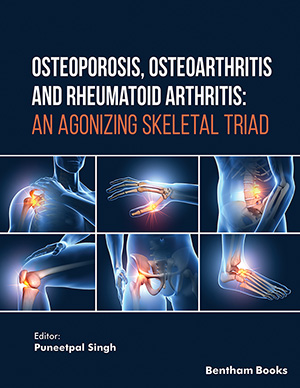Abstract
Background: Tumor necrosis factor alpha (TNFα) is a pivotal cytokine involved in the pathogenesis of certain inflammatory diseases, such as rheumatoid arthritis (RA), spondyloarthropathies, and inflammatory bowel diseases. In the last two decades, TNFα inhibitors (TNFi) have revolutionized the treatment and outcome of the above disorders. However, the use of TNFi has been associated with the development of many autoimmune phenomena and paradoxical skin manifestations that may present as the same type of clinical indications for which the TNFi effectively used. Thus, they may display as arthritis, uveitis, colitis, psoriasis, and several other cutaneous clinical manifestations, among them the development of morphea, a localized scleroderma skin lesion.
Case Presentation: We describe a 58-year-old woman with seronegative RA, refractory to methotrexate, who was treated with ABP-501 (Hefiya), an adalimumab (ADA) biosimilar and developed an oval-shaped, deep skin lesion of approximately 3.5cm in size, affecting the left part of her back compatible with morphea 3 months after the initiation of therapy. ADA biosimilar was discontinued and two months later, she had substantial skin improvement.
Conclusion: This is the first report of morphea manifestation during TNFi biosimilar since the patient had no other trigger factors for morphea development like trauma and infections. Physicians dealing with patients treated with TNFi biosimilars should be aware of paradoxical skin reactions, among them morphea; thus, close monitoring, a minute and careful clinical examination, and a follow- up check are required.
Keywords: Morphea, localized scleroderma, TNFα inhibitors, TNFi biosimilar, adalimumab biosimilar, psoriasis.
[http://dx.doi.org/10.1007/s40257-017-0269-x] [PMID: 28303481]
[http://dx.doi.org/10.1056/NEJM200108023450506] [PMID: 11484692]
[PMID: 28281458]
[http://dx.doi.org/10.1080/1744666X.2022.2064275] [PMID: 35535405]
[http://dx.doi.org/10.1002/art.21233] [PMID: 16052599]
[http://dx.doi.org/10.31138/mjr.32.2.96] [PMID: 34447904]
[http://dx.doi.org/10.2174/1573397117666211102094330] [PMID: 34727862]
[http://dx.doi.org/10.1136/ard.2007.075663] [PMID: 17728330]
[http://dx.doi.org/10.1093/rheumatology/ker144] [PMID: 21593064]
[http://dx.doi.org/10.1080/03009740902922612] [PMID: 19579151]
[http://dx.doi.org/10.1016/j.jaad.2020.06.1027] [PMID: 32687966]
[http://dx.doi.org/10.1080/14712598.2018.1430760] [PMID: 29350566]
[http://dx.doi.org/10.1684/ejd.2010.0946] [PMID: 20299314]
[http://dx.doi.org/10.3109/s10165-011-0550-4] [PMID: 22095405]
[PMID: 23540081]
[http://dx.doi.org/10.1684/ejd.2013.1929] [PMID: 23557629]
[http://dx.doi.org/10.1684/ejd.2015.2631] [PMID: 26242643]
[http://dx.doi.org/10.1016/j.reumae.2018.06.001]
[http://dx.doi.org/10.1016/j.adengl.2017.03.021] [PMID: 28110825]
[http://dx.doi.org/10.1016/j.jdcr.2019.05.008] [PMID: 31312709]
[http://dx.doi.org/10.1056/NEJMra1909094] [PMID: 34379924]
[http://dx.doi.org/10.1001/archdermatol.2010.120] [PMID: 20566921]
[http://dx.doi.org/10.2174/18743129014090100030] [PMID: 26161155]
[http://dx.doi.org/10.1002/art.23645] [PMID: 18668576]
[http://dx.doi.org/10.1016/j.semarthrit.2009.09.001] [PMID: 19914686]
[http://dx.doi.org/10.1038/nrrheum.2014.137] [PMID: 25136781]
[http://dx.doi.org/10.1165/rcmb.2013-0386OC] [PMID: 24325577]
[http://dx.doi.org/10.1016/j.semarthrit.2015.06.006] [PMID: 26254121]
[http://dx.doi.org/10.1159/000071783] [PMID: 12920362]
[http://dx.doi.org/10.2174/1573397116666201119151349] [PMID: 33213352]
[http://dx.doi.org/10.1007/s00296-022-05129-w] [PMID: 35429289]












